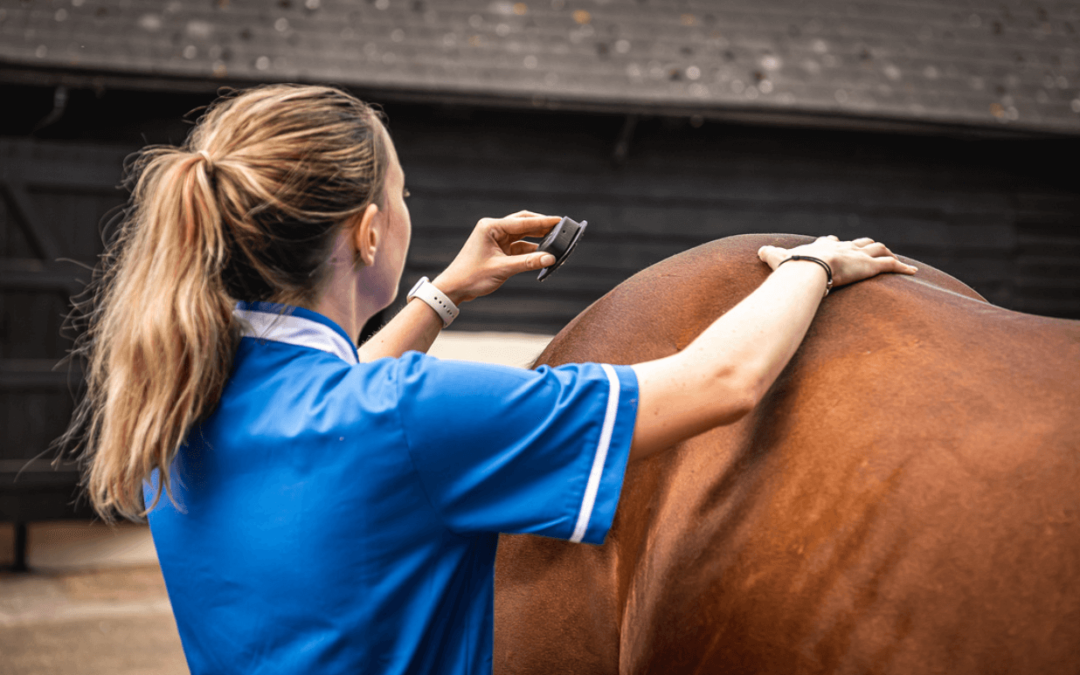Equine veterinary medicine is essential for ensuring the health and well-being of horses, whether in the sports or leisure domain. For years, equine medicine professionals have followed well-established care protocols to treat diseases and injuries in these athletes. In recent years, the industry has undergone significant advancements thanks to technological progress. These innovations have improved horse management, diagnostics, surgery, professional training, and much more.
But how have these advancements affected the industry? What is the future of horse veterinary medicine?
The use of new technologies
Technology has brought numerous advantages to the equine veterinary medicine industry, enabling professionals to provide superior quality care, particularly in terms of precision. Several veterinary diagnostic tools have emerged in recent years and are used daily:
- Digital imaging techniques, including scanners and X-rays, allow for high-quality visualization of bones, soft tissues, internal organs, and blood vessels.
- Endoscopes enable veterinarians to visualize a horse’s internal organs, such as the stomach or lungs.
- Shockwave therapy devices are used to treat musculoskeletal injuries, and embedded sensors can collect data directly during training (heart rate, recovery, stride length, etc.).
The benefits of using technology are numerous: more precise diagnostics, more effective treatments, and shorter recovery times for injuries.
A closer look at the use of locomotion quantification systems during veterinary examinations.
According to the survey respondents, the main uses are:
-
- 77.6% : To monitor the progress of rehabilitation
- 73.1% : To get to know your horse better
- 71.6% : To help diagnose lameness
- 61.2% : Establish a reference base for ongoing monitoring
- 56.7% : Quantify the impact of treatment on locomotion
- 46.3% : Investigate counter-performance
- 44.8% : Quantify with figures the asymmetry caused by an injury
Advances in veterinary medicine
Veterinary telemedicine
Telemedicine is a practice that allows veterinarians to provide remote care, meaning veterinarians can diagnose and treat horses from a distance without being physically present at the stable.
This practice has several advantages: reduced travel costs for owners and veterinarians, access to superior quality care in rural areas where veterinarians are scarce. Telemedicine can also enable faster and more efficient consultations, especially by detecting pathologies at an early stage. This can be done using sensors like EQUIMETRE, which allows for remote monitoring of horse health.
However, telemedicine has its limitations. Some surgical procedures cannot be performed remotely, just like certain physical examinations and manipulations that are necessary for an accurate diagnosis.
Equine surgery
Equine surgery is a complex and challenging discipline that requires specialized training and extensive experience. However, new innovations have made surgery safer and more effective by providing veterinarians with new tools.
One of the main advancements is the use of real-time imaging during surgical procedures. With the use of scanners and imaging devices to visualize the horse’s body in real time, surgical interventions are more precise. Augmented reality tools that project 3D images onto the surgical field also exist, aiding in guiding surgical instruments with greater precision.
Orthopedic implants and reconstruction materials have also evolved thanks to technological innovations. Modern implants are more durable and resilient, allowing horses to recover more quickly and regain their mobility. Bone reconstruction techniques have also been improved through the use of bone filling materials and biomaterials.
Data Analysis
Data collection and analysis are expanding in the field of equine veterinary medicine. The recorded data is used to improve horse health and well-being, as well as for research and development of new therapies.
One key area where data analysis is used in equine veterinary medicine is preventive health. Veterinarians can collect extensive data on horses, such as heart rate and recovery capacity, to establish individual health profiles. These profiles can help veterinarians diagnose and prevent pathologies, as well as identify the risks of chronic diseases.
Data analysis is also used to monitor horses’ response after an injury or illness. Longitudinal follow-ups are established, both for locomotion – EQUISYM – and for cardiac pathologies – EQUIMETRE VET. This data can be analyzed to track healing progress and adjust treatments accordingly.
If you want to find out more about assessing the effectiveness of veterinary treatment carried out on a horse, we recommend you download this case study.
Data can also be used for research and development of new therapies for horses or to improve existing treatments. It can also enhance horse management by helping trainers adjust training methods to avoid overtraining or undertraining.
Training ruture professionals
New technologies have a significant impact on the training of future equine veterinarians. Training programs are increasingly focused on the use and integration of technology in horse health management.
Online training and distance learning tools are also being more widely used in training programs. This allows for more diverse and easily accessible training, regardless of geographic location.
Conclusion
Equine veterinary medicine is undergoing a major transformation through the integration of technology. The advancements in diagnostic imaging, telemedicine, and data analysis have significantly improved the quality of care provided to horses, leading to more precise and rapid results.
Despite the undeniable benefits of technology, it is important to note that it does not replace the need for thorough training and experience of professionals. It should be used responsibly and as a complement to veterinarians’ clinical expertise to ensure optimal outcomes. However, the future of equine veterinary medicine will undoubtedly be closely linked to the evolution and adoption of these innovations.
SOURCES :
Haussler, K.K. (1999). Chiropractic Evaluation and Management. Veterinary Clinics of North America: Equine Practice, 15(1), pp.195–209. doi:https://doi.org/10.1016/s0749-0739(17)30172-4.
Thirkell, J. and Hyland, R. (2017). A Survey Examining Attitudes Towards Equine Complementary Therapies for the Treatment of Musculoskeletal Injuries. Journal of Equine Veterinary Science, [online] 59, pp.82–87. doi:https://doi.org/10.1016/j.jevs.2017.10.004
Keywords: equine veterinary medicine, new veterinary technologies, telemedicine, surgery, data, equine health, sport horse, equine athletes
Photo credit: @SarahFarnsworth

